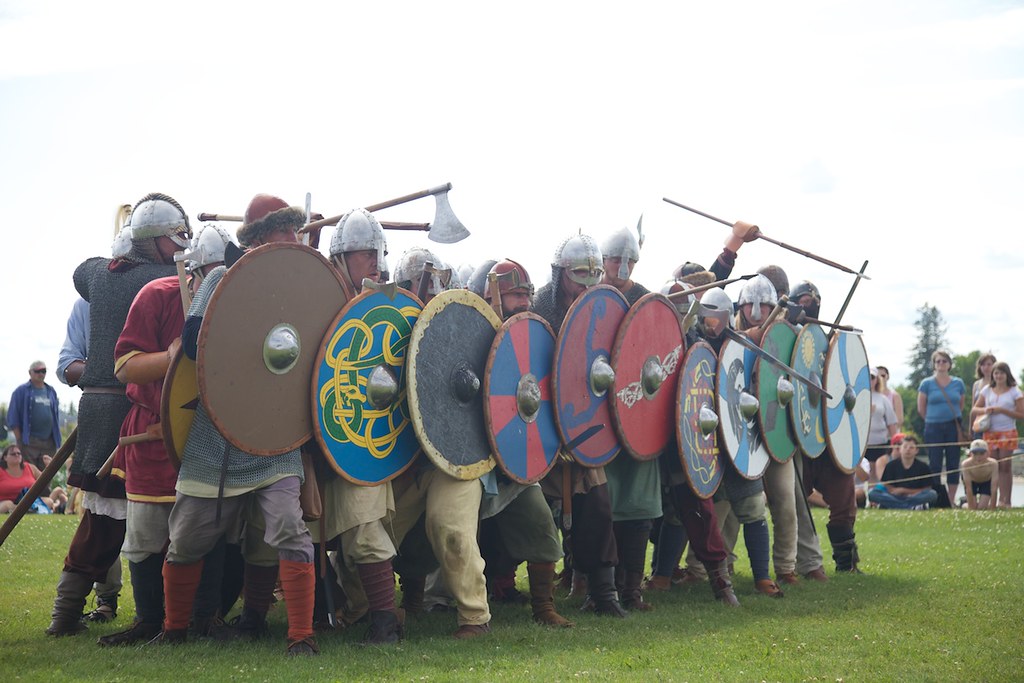I thought about a trip I made to Washington Island several years ago. That’s the island found off the tip of Wisconsin’s Door Peninsula where most people arrive by ferry. The residents displayed their Icelandic roots with great pride. I wondered at the time and I’ve wondered occasionally since, whether this was true or simply a legend. How many Icelandic immigrant communities could there possibly be? There are only about 300,000 citizens of Iceland today and there were considerably fewer in the 19th Century.
As I discovered with some simple searching, immigrants from Iceland did indeed settle on Washington Island. It followed a typical pattern. A small number of immigrants moved there first, in this case four bachelors in 1870, and they wrote home with tales of abundance and prosperity. Friends and family soon followed. It wasn’t long before a genuine Icelandic community established itself on the isolated shores of the island, an idyllic spot where farming and fishing could sustain them and offer a life of better opportunities.
Difficult Times in Iceland

It wasn’t a hard sell. Times were tough in Iceland. Most people lived in abject poverty as subsistence farmers. Few had any hope of improvement. There were social inequities and discontent coupled with severe economic difficulties. The nation entered a period of particularly harsh winters that further punished an ill and famished populace. Then the 1875 eruption of Mount Askja covered much of northeastern Iceland in ash (map). Most citizens suffered a pretty miserable existence. Many of them chose to leave.
According to the Icelandic Emigration Center in Hofsos, Iceland, “It is generally estimated that somewhere between 16,000 and 20,000 Icelanders emigrated; 20 – 25% of the total population of Iceland at the time.” Most of them settled in the Great Lakes and Great Plains regions of Canada and the United States. This lasted from the 1870’s through the early years of the 20th Century.
Settlement in a New Land
Canada and the United States continue to have small but significant populations who claim Icelandic heritage. Statistics Canada counted 88,875 people (Manitoba 30,555; British Columbia 22,115; Alberta 16,870; Ontario 11,140). Meanwhile, the U.S. Census Bureau counted 42,716 (but no breakdown by state that I could find).
In Canada
The largest concentration of Icelanders outside of Iceland live in Gimli, Manitoba, about 75 kilometres (47 miles) north of Winnipeg. This anchored an area once known as “New Iceland.” When established in 1875, New Iceland had a special semi-independent status with a degree of limited self-government. It was not incorporated into Manitoba until several years later.

They celebrate their heritage each year at the Icelandic Festival of Manitoba, or Islendingadagurinn. They’ve done this every year for more than a century. The celebration reaches its highpoint on the first Monday of August to coincide with a public holiday.
Iceland also continues to survive in several Canadian place names besides Gimli. These included: Baldur, Manitoba; Elfros, Saskatchewan; and Reykjavik, Manitoba.
The Gimli settlement went through hard times in its initial years. At the beginning it probably didn’t offer anything better than their former home in Iceland. This caused some of the recent immigrants to search for better lands further south. Those people arrived at the northeastern corner of the Dakotas, in the United States.
Migration into the United States
The Icelandic community was never a dominant group in North Dakota. Of course, the Norwegians and Germans arrived in much greater numbers. However they formed a sizable settlement and maintained strong cultural identities in Pembina County, where they arrived in 1878. This has been preserved at the Gunlogson Homestead in Icelandic State Park. Also festivals such as the August the Deuce exist in the town of Mountain. This event tracks with the date of the Gimli festival. Visitors can attend the event in Mountain then drive across the border to Gimli the next day.
Manitoba and North Dakota weren’t the initial focus of Icelandic immigrant settlement, though. Setting aside the Icelandic sagas, Leif Ericsson, Eric the Red and the 11th Century Vinland colonies, and moving the clock forward to the modern era, the first permanent settlement occurred, counter-intuitively, in Utah.
Utah?!?
In 1855, some twenty years before Gimli and New Iceland established themselves in Canada, Icelandic immigrants arrived in Spanish Fork, Utah. Missionaries of the Latter Day Saints had visited Iceland previously and they’d converted a few hundred citizens to the Mormon faith. For all the reasons cited previously — plus a dose of religious intolerance in their homeland — 410 Icelandic converts traveled to the United States. They joined American pioneers who had established Spanish Fork a few years earlier.

Descendants of Utah’s Icelandic settlers continue to celebrate their heritage. A lighthouse-shaped monument complete with U.S. and Icelandic flags, built in 1938 and rededicated in 2005 for the sesquicentennial of the immigration, stands in Spanish Fork today (map). I wish I’d known about this monument during my recent trip to Utah. I was touring nearby and I most certainly would have stopped for a visit
What is the center of the Icelandic community in the United States today? It is Seattle, Washington, at least according to them. That’s almost as unexpected as Utah.

Leave a Reply